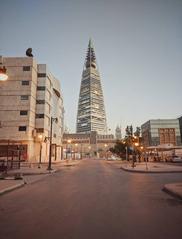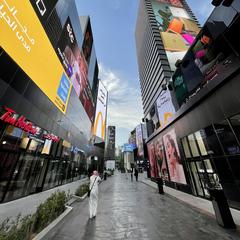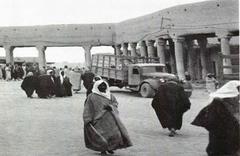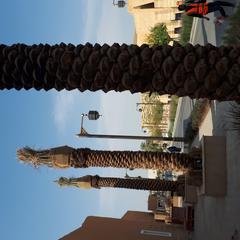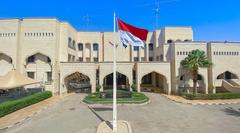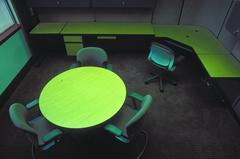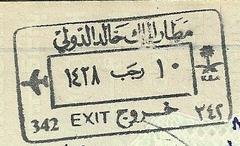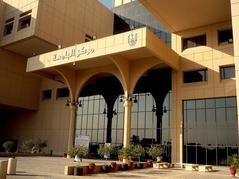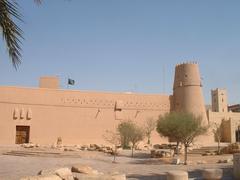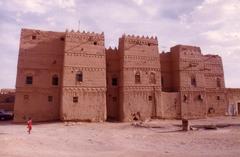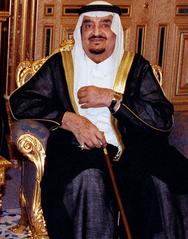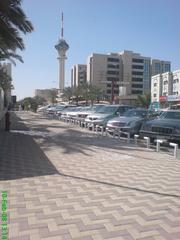Visiting Wadi Hanifa Street in Riyadh: Hours, Tickets, and Tips
Date: 19/07/2024
Introduction
Wadi Hanifa, also known as شارع وادي حنيفة, is a remarkable oasis nestled in the heart of Riyadh, Saudi Arabia. This natural valley stretches over 120 kilometers, weaving through the bustling city and offering a unique blend of historical significance, cultural richness, and modern recreational facilities. Named after the Banu Hanifa tribe, Wadi Hanifa has been an integral part of Riyadh’s history for centuries, serving as a lifeline for agriculture and settlement in the region. Once a vital watercourse supporting early settlements and trade routes, the valley has evolved into a beloved destination for both locals and tourists. The Saudi government’s extensive rehabilitation projects have transformed Wadi Hanifa into a hub of ecological balance, cultural activities, and economic revitalization. This comprehensive guide will take you through the historical background, visitor information, cultural and environmental significance, and much more to help you make the most of your visit to Wadi Hanifa. (Aga Khan Development Network)
Table of Contents
- Introduction
- Historical Background
- Transformation and Modern Development
- Visitor Information
- Cultural and Environmental Significance
- Architectural and Recreational Highlights
- Special Events and Tours
- Economic Impact
- Future Prospects
- FAQ
- Conclusion
Historical Background
Wadi Hanifa (شارع وادي حنيفة) has been a cornerstone of Riyadh’s history for centuries, serving as a natural watercourse that supported agriculture and settlement. Named after the Banu Hanifa tribe, the valley was a lifeline for its inhabitants, providing water for irrigation and sustaining various forms of life in an otherwise arid region. The fertile soil and abundant water supply facilitated agriculture, which supported the growth of settlements and trade.
Transformation and Modern Development
In recent decades, Wadi Hanifa has undergone significant transformation. The Saudi government, recognizing the historical and environmental importance of the wadi, initiated extensive rehabilitation projects. The Arriyadh Development Authority (ADA) spearheaded these efforts, aiming to restore the wadi’s ecological balance and enhance its role as a recreational and cultural asset.
One of the most notable projects was the Wadi Hanifa Restoration Project, which began in the early 2000s. This ambitious initiative focused on cleaning up the wadi, removing pollutants, and reintroducing native plant species. The project also included the construction of parks, walking trails, and picnic areas, making the wadi a popular destination for both locals and tourists. The restoration efforts have been widely praised and have earned international recognition, including the 2010 Aga Khan Award for Architecture (Aga Khan Development Network).
Visitor Information
Visiting Hours
Wadi Hanifa is accessible to visitors 24/7, but it is recommended to visit during daylight hours for the best experience.
Tickets
Entry to Wadi Hanifa is free of charge. However, some specific attractions or events within the valley may require tickets.
Travel Tips
Comfortable walking shoes and sun protection are advisable. There are several entry points and parking areas around the wadi. Public transportation options are also available.
Nearby Attractions
Other notable sites near Wadi Hanifa include the King Abdulaziz Historical Center, the National Museum of Saudi Arabia, and the Al Masmak Fortress. These attractions offer additional insights into the rich history and culture of Riyadh.
Cultural and Environmental Significance
Wadi Hanifa holds immense cultural and environmental significance. Culturally, the wadi is a symbol of Riyadh’s heritage and resilience. It serves as a reminder of the city’s historical roots and the importance of sustainable development. The wadi’s restoration has also provided a space for cultural events and activities, further enriching the city’s cultural landscape.
Environmentally, Wadi Hanifa is a critical green space in Riyadh. The valley’s natural watercourse supports a diverse ecosystem, including various plant and animal species. The restoration project has helped to preserve this biodiversity, creating a haven for wildlife in the midst of an urban environment. The wadi also plays a crucial role in flood management, helping to channel rainwater and prevent flooding in the city.
Architectural and Recreational Highlights
Several architectural and recreational highlights make Wadi Hanifa a must-visit destination. The wadi is home to numerous historical sites, including ancient dams and agricultural terraces that date back centuries. These structures provide a glimpse into the region’s past and its long-standing relationship with water management and agriculture.
In addition to its historical sites, Wadi Hanifa offers a range of recreational activities. The valley’s parks and trails are popular with joggers, cyclists, and families looking for a peaceful escape from the city’s hustle and bustle. The wadi’s scenic beauty, with its lush greenery and flowing water, provides a serene backdrop for picnics and outdoor gatherings.
Special Events and Tours
Wadi Hanifa hosts various cultural events and guided tours throughout the year. These events often include traditional music performances, art exhibitions, and educational programs that highlight the wadi’s historical and environmental significance. Guided tours are available for those interested in a more in-depth exploration of the valley’s history and natural features.
Economic Impact
The restoration and development of Wadi Hanifa have also had a positive economic impact on Riyadh. The wadi’s transformation into a recreational and cultural hub has attracted tourists and boosted local businesses. Restaurants, cafes, and shops have sprung up around the wadi, catering to the needs of visitors and creating job opportunities for residents.
Moreover, the wadi’s restoration has increased property values in the surrounding areas. The presence of green spaces and recreational facilities has made these neighborhoods more desirable, attracting both residents and investors. This economic revitalization has contributed to the overall growth and development of Riyadh.
Future Prospects
Looking ahead, Wadi Hanifa is poised to play an even more significant role in Riyadh’s development. The Saudi government has outlined ambitious plans to further enhance the wadi’s infrastructure and expand its recreational offerings. These plans include the construction of additional parks, cultural centers, and eco-friendly facilities.
The continued development of Wadi Hanifa aligns with Saudi Arabia’s Vision 2030, a comprehensive plan to diversify the country’s economy and promote sustainable development (Vision 2030). By investing in projects like Wadi Hanifa, the government aims to improve the quality of life for residents, attract tourists, and create a more sustainable and resilient urban environment.
FAQ
Q: What are the visiting hours for Wadi Hanifa?
A: Wadi Hanifa is open 24/7, but it is best visited during daylight hours.
Q: Is there an entry fee for Wadi Hanifa?
A: Entry to Wadi Hanifa is free. Some specific attractions or events may have fees.
Q: What are the best times to visit Wadi Hanifa?
A: The best times to visit are during the cooler months of the year, typically from October to March.
Q: Are there guided tours available?
A: Yes, guided tours are available and can provide a more comprehensive experience.
Q: What nearby attractions can I visit?
A: Nearby attractions include the King Abdulaziz Historical Center, the National Museum of Saudi Arabia, and the Al Masmak Fortress.
Conclusion
In summary, Wadi Hanifa (شارع وادي حنيفة) is a historically and culturally significant area in Riyadh, Saudi Arabia. Its transformation from a vital agricultural valley to a modern recreational and cultural hub is a testament to the city’s commitment to preserving its heritage and promoting sustainable development. The wadi’s restoration has not only enhanced its environmental and cultural value but also contributed to the economic growth of Riyadh. As the city continues to develop, Wadi Hanifa will undoubtedly remain a cherished and integral part of its landscape. For more information and updates, consider downloading the mobile app Audiala, checking out other related posts, or following us on social media. (Vision 2030)
References
- Aga Khan Development Network. (2010). Aga Khan Award for Architecture
- Vision 2030. (n.d.). Vision 2030
